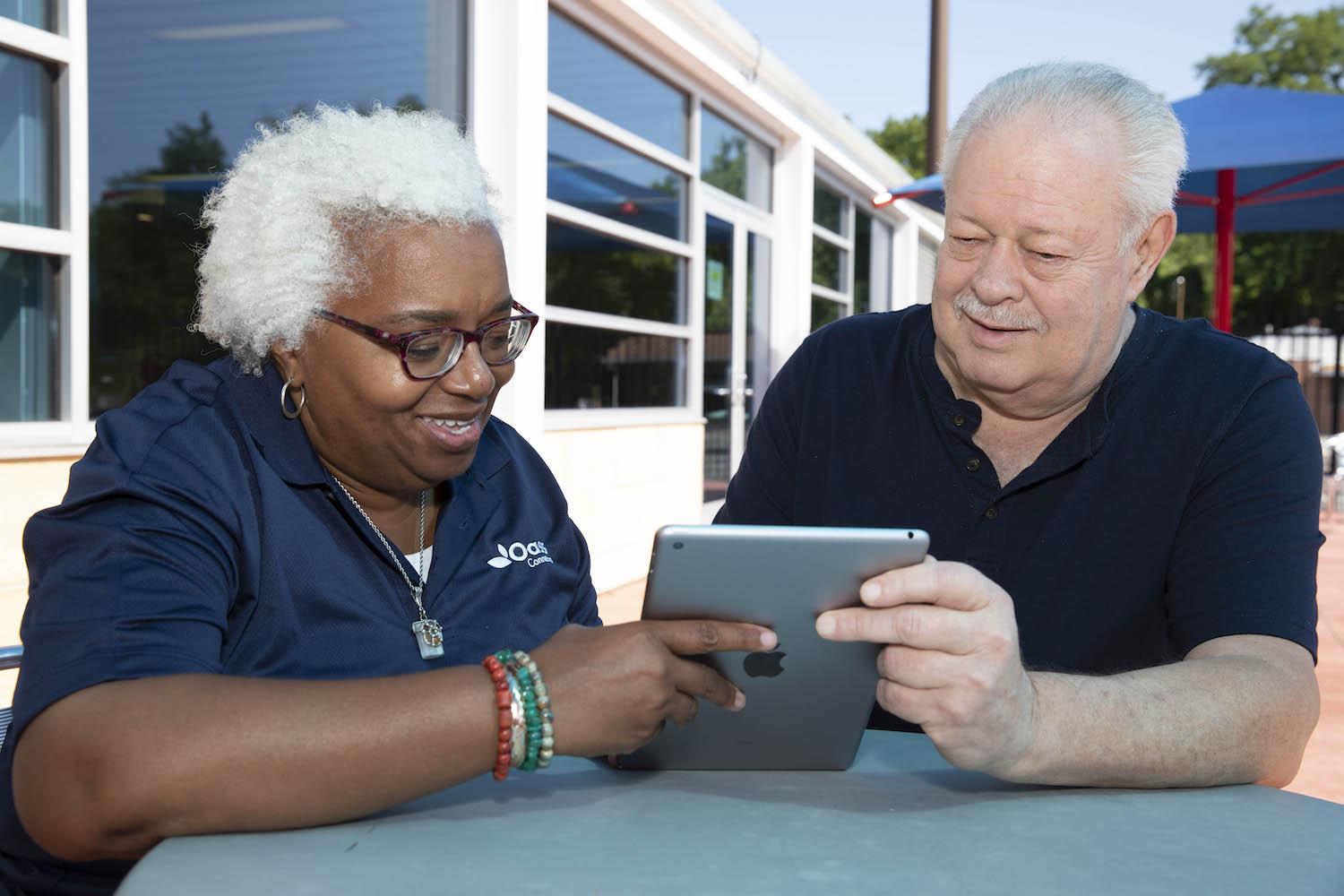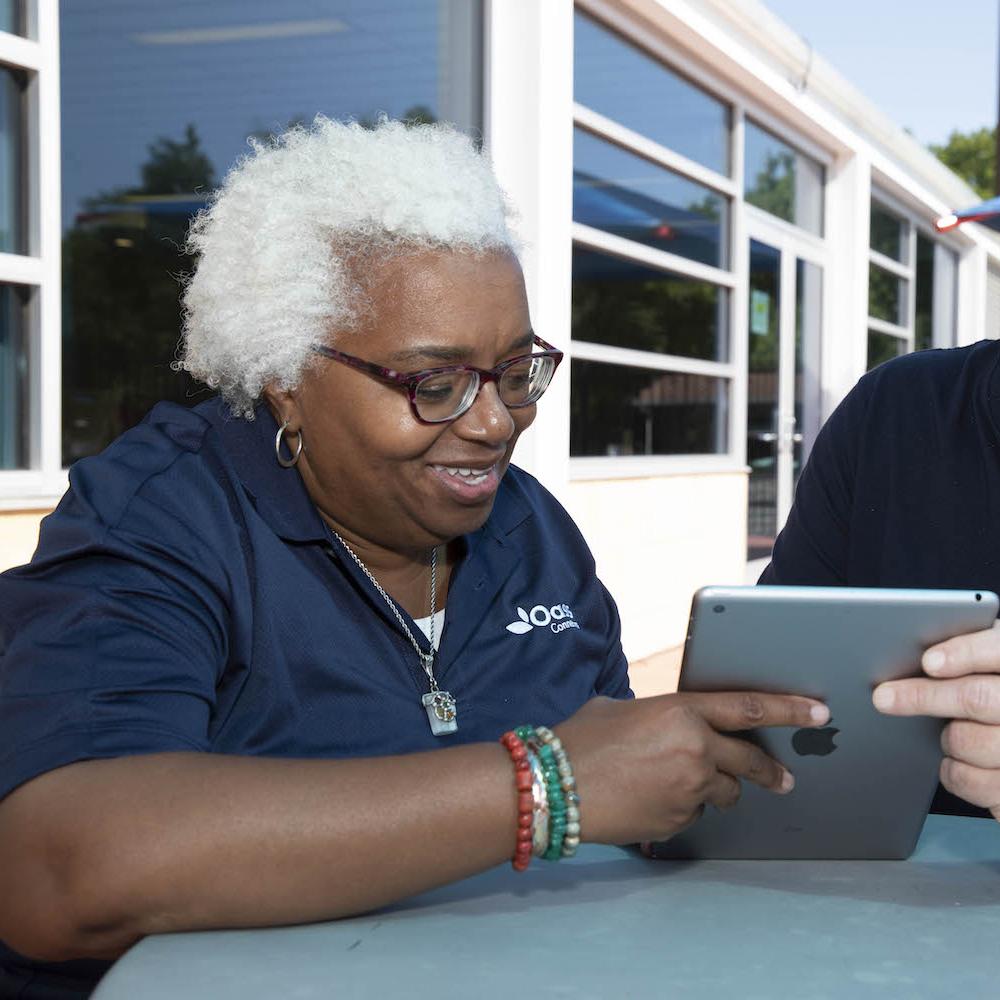Rising Seas Threaten Coastal Wetlands — and Local Economies


Coastal wetlands, like mangroves and tidal marshes, were once seen as wastelands needing to be emptied, but in the long run that has been akin to pouring money down the drain. A 2014 study concluded these regions provide more than $190,000 in economic value ($227,000 in 2022 dollars) per hectare, making them one of the planet's most valuable ecosystems. They’re the silver lining of our shores, but the future presents some dark clouds on the horizon.
Coastal wetlands are extremely vulnerable to climate change and rising seas. As sea levels increase and inch over our shores, the ecological balance in these regions begin to shift, including whole ecosystems. Scientists have long debated if the migration of coastal wetlands toward inland areas can compensate for the lands that could soon be flooded by saltwater. To that end, a new study of 166 estuaries in the U.S. sheds light on the topic, finding that sea-level rise will transform our coasts, and at a cost. Assuming a 1.5-meter increase in sea levels, coastal wetlands are predicted to shift toward land, but still shrink in size.
Throughout the U.S., coastal wetlands come in different forms, ranging from salty to freshwater habitats. Due to increased sea-level rise, more coastal saline wetlands are predicted to displace coastal freshwater wetlands, leading to a net loss in wetlands overall. States lining the Atlantic Ocean and Gulf of Mexico, including Louisiana, Florida, North Carolina, Texas and South Carolina, face the greatest decrease in coastal wetlands.
This slow migration will also damage other valuable habitats in the process. Most of this change will occur at the cost of coastal freshwater wetlands, but croplands, grasslands, pastures and forests are also at risk. For instance, the encroachment of wetlands jeopardizes pastures managed for livestock and low-lying rice fields that are also used for crawfish cultivation. Sea-level rise already threatens agriculture in low-lying areas through flooding and saltwater intrusion into groundwater, and a change within these ecosystems adds even more threats.
The loss of wetlands also harms communities and local economies, especially in an ever-hotter world. For starters, even when their area has been greatly reduced, coastal wetlands help mitigate the damage from storm surges and concurrent waves, thereby protecting the value of properties from flooding to the tune of millions of dollars. In Florida, the disappearance of coastal wetlands resulted in an estimated additional $430 million in property damage during Hurricane Irma — and more losses could occur in the coming years.
Wetlands also provide habitat for valuable fisheries like salmon, crabs and shrimp, contributing a wide range of jobs as well as hundreds of millions of dollars each year to local economies. In addition, these ecosystems slow erosion, clean water, and provide recreational opportunities like kayaking, canoeing, recreational fishing and hunting. Finally, wetlands can help fight climate change by sequestering and storing large amounts of carbon.
Unfortunately, coastal wetlands are already being lost at a rapid clip: the equivalent of nearly seven football fields that are destroyed every hour in the continental U.S. alone. And on a global scale, the numbers become even worse, as only 0.5 meters of sea-level rise could destroy anywhere from 46 percent to 60 percent of coastal wetlands by the end of this century.
These threats do not mean all hope is lost. Society can still make efforts to restore and protect the wetlands that still exist. Ensuring that freshwater still flows to coastal wetlands keeps them healthy and may slow the effects of sea-level rise. These actions will help maintain our coastal defenses against storms, slow global warming and preserve the planet’s food supplies.
Nearly 30 percent of the U.S. population lives in coastal counties, while the population in coastal counties lining the Gulf of Mexico has soared by 150 percent in recent decades. The appeal of living with constant ocean breezes is part of this population shift. But the risks of sea-level rise, these regions’ vulnerability to tropical storms and flooding should be put into perspective by everyone. Given the massive economic and societal benefits that coastal wetlands provide, everyone benefits, and even profits, from preserving more coastal wetlands.
Image credit: Tyler Butler via Unsplash
Kahlúa Accelerates Investments in Sustainable Coffee and Local Communities


It’s a must-have in any liquor cabinet, and now this popular brand has decided responsible sourcing is a must-have, too. Kahlúa, the coffee-based liqueur that pairs well with milk (as in the White Russian shown above, yum!), coffee, soda, vodka, soda, ice cream or all of them together — don’t knock it till you try it — recently announced it's investing in the coffee farmers and their families that provide the brand its most vital ingredient.
Kahlúa and its parent company, Pernod Ricard, has said they are adopting a three-tiered sustainability program so that 100 percent of the Mexico-based brand's coffee is sourced responsibly by the end of this year. First, the company will launch education and training programs for coffee farmers — including tactics such as improved forest management, biodiversity and soil management.
Next, this plan has a social component, one that covers gender equality, education and social impact. Kahlúa says such plans include expanded access to clean water and sanitation, with the construction of rainwater capture tanks and dry toilets.
Finally, Kahlúa intends to pay farmers a premium for their coffee beans — similar to the fair trade model, though the brand has not explicitly used the term in describing this program. Still, the end game is similar: Investments in crop management, nurseries, soil health, and crop diversification can help ensure that farmers and their families can build wealth and thereby invest in their local communities.
Kahlúa will continue to partner with Fondo Para La Paz, a Mexico-based nonprofit, to carry out the aforementioned initiatives. The brand has been working with the organization since 2016.
Climate change and increased awareness about human rights are together forcing the wider industry to pivot. Single-bean coffees, for example, have surged in popularity in part because the sourcing of beans from a small region can help improve traceability. Colombia’s lucrative coffee sector, which includes the timeless brand Juan Valdez, has committed to working with growers to boost biodiversity and agroforestry.
There really aren’t any other options for the sector: Only so many coffee-based hoodies can be sold, and it will take coffee drinkers a while to warm up to synthetic or molecular coffee alternatives. The Inter-American Development Bank is among the organizations that have warned climate change could wipe out lands available for growing coffee by as much as 50 percent before 2050. The numbers aren’t adding up, as the enduring popularity of coffee house chains, beverages such as bottled cold brews, nitro coffee and single-serve coffee machines for the home point to steady growth in the coming years.
“We recognize that the way we consume, do business and ultimately live has to change,” said Billy King, Kahlúa’s director of sustainable development, in a public statement. “With this program, we have the opportunity to engage with communities we rely on for our ingredients and work together to ensure a strong and more sustainable future for us all.”
Image credit: Ernest Roy via Pixabay
Students are Fed Up: They Want Governments and the Fossil Fuel Industry to File for Divorce


“It’s no secret that our enemy, the fossil fuel industry, rules the world. We will turn the tide, change history, and smash the fossil economy.”
The End Fossil: Occupy movement is upset and are again planning student protests at schools and universities around the world between September and December 2022. Their goals are centered around ending the production and finance of fossil fuel projects. They’re united, and they’re pissed off.
Is the anger justified? Well, that’s subjective. Is it fair that oil and gas companies are posting record profits? Is it fair that coal companies are doing better than ever despite promises to phase them out? Is it fair that all of this is happening while citizens around the world are falling further behind as the treadmill of inflation increases its pace?
I say the anger is justified, though it’s important to remember that not everyone involved in the fossil fuel industry is the enemy.
Fossil fuels will run out
The degradation of our natural environment is bad, and the greed that fuels the industry is loathsome. What we can’t forget, though, is that there are people who earn a living in the fossil fuel industry because it feeds their families and puts a roof over their children’s heads.
We’re facing tough times, and securing a job is the No. 1 priority regardless of the industry. Basic needs have to be met before anyone can start being choosy over the source of their income.
There is, however, a problem with the industry. There’s no hiding from the science. We cannot sustain the levels of carbon emissions that we are currently playing with, and the fossil fuel industry is the biggest culprit.
Even if you question or deny the science, there is no denying that fossil fuel resources are finite. They will run out eventually. When that happens, the fossil fuel industry will crumble, and the people who feed their families on the backs of the industry will lose their jobs en masse.
We should be transitioning workers out of the fossil fuel industry and into sustainable energy development to prevent massive layoffs down the road and, of course, to preserve the health of our planet.
Subsidies keep the fossil fuel industry competitive
There’s a hesitance to embrace the renewable energy transition, though. Why?
Clean energy is still too expensive, right? Fifteen years ago, this was the case — but it’s not true anymore, and the costs of renewable energy continue to fall. Actually, using the Levelized Cost of Electricity (LCOE) to compare the costs of different energy sources reveals that solar and wind power are much cheaper to produce than oil and gas, and even coal in many instances.
So, what’s the holdup? Why aren’t we using renewable energy if it’s so cheap? Unfortunately, our governments have an unhealthy love affair with the fossil fuel industry. It’s as toxic a relationship as they come, but they can’t seem to say no to each other.
While our governments attend climate conferences, preach the need for urgent action, and plead for all of us to use cleaner energy, they are handing over more money than we can wrap our heads around to the fossil fuel industry.
Data from the International Monetary Fund (IMF) shows that $5.9 trillion were spent on fossil fuel subsidies by governments around the world in 2020. That’s about seven percent of global GDP. Our governments are literally paying for us to keep using fossil fuels.
Do you remember when the director of the World Food Program, David Beasley, said that if Elon Musk donated $6 billion we could end world hunger? If we cut fossil fuel subsidies for just nine hours, problem solved.
How much longer will we go on acknowledging the climate crisis while still being complacent? Our youth are saying enough is enough.
More student strikes and occupations are being planned around the world for later this year. While our education centers come to a standstill as students demand the end of the fossil fuel era, hopefully our governments will learn that actions speak louder than words.
“We are here. We are radical. We are ready to occupy.”
Image credit: Markus Spiske via Pexels
Collaborating, Listening, Iterating: Early Lessons from the Digital Equity Accelerator


St. Louis-based Oasis Institute — part of the inaugural cohort of HP's Digital Equity Accelerator — is expanding a new virtual platform to educate and assist aging adults as they take charge of their health and give back to their communities. (Image credit: Oasis Institute)
Last year, HP announced an audacious goal to accelerate digital equity for 150 million people by 2030. Even before embarking on this commitment, the team knew that success would take collaboration and an openness to continuous testing and learning.
The reality is that communities across the globe face a digital equity crisis — where lack of access to devices, connectivity, digital literacy skills, and relevant, high-quality content keep millions behind. We see this in education, healthcare and economic opportunity, particularly for historically marginalized groups, women and girls, educators, healthcare practitioners, and people with disabilities.
To address this challenge, HP collaborated with the Aspen Institute to launch the Digital Equity Accelerator, an initiative that enables selected nonprofits to advance digital equity in their communities. Using HP’s expertise in technology and Aspen Digital’s deep-rooted connection to disadvantaged communities, the Digital Equity Accelerator provides funding, devices, and capacity building for an inaugural cohort of seven nonprofit organizations in the United States, Morocco and India.
In the first several weeks since the Digital Equity Accelerator launched, we’ve begun to see how unique partnerships can help accelerate digital equity at scale. Here are four lessons we’ve learned that can help individuals, startups, nonprofits and government agencies promote and improve digital equity for people in local communities.
1. Diverse voices make teams stronger
Digital equity is complex — it looks different across communities, and no one solution will solve all inequities — so it’s important to select partners that bring different perspectives to the table. In designing the Digital Equity Accelerator, we realized that promoting diversity within the cohort would bring varied perspectives on addressing digital equity and, in turn, provide the greatest opportunity for success. In the accelerator model, organizations both learn from and contribute to the cohort experience, activating the diverse knowledge and skills that the organizations bring with them.
Diversity most often occurs by design. For our program, multiple organizations were selected per country, each paired with a mentor to provide in-depth guidance. Organizations are provided access to technical advisors across sectors and connected to HP teams and in-country networks to support their growth locally and nationally. Beyond the dedicated support, we also see that cross-country learning is crucial. During the Digital Equity Accelerator’s weekly learning sessions, the nonprofits share advice with one another — from their strategies and tools for monitoring and evaluating impact to tips on pitching their work to funders. The diversity of solutions, experiences, and teams is an asset to the program and helps promote collaboration versus direct competition.

2. Listen to organizations’ needs
A key part of HP’s offering in the Digital Equity Accelerator is hardware as a component of closing the digital divide. To ensure that the organizations would receive the devices that could best amplify their work, we took a hands-on approach. HP met early on with the teams to understand what’s working, what’s not, and what aspirations the hardware could help make a reality. What we learned was that the strategy for scale, the opportunity to explore accessibility features, and the creativity to think of how hardware could support connectivity, content, and digital literacy aspects of their missions. Through those listening sessions we made suggestions and worked collaboratively to create the ideal product mix. Asking the right questions — and listening — helps any initiative move forward smarter.
That doesn’t stop at cash and hardware disbursements. Aspen Digital launched an initial survey to all cohort members to learn about their needs, particularly the topics that would best support their growth. Since the program started in June, we have been adjusting the format of learning sessions and advisor offerings to better serve the cohort — from adding new topics to making sessions shorter. Adding collaborative sessions and technical advising on skills the nonprofits find crucial puts emphasis on the expertise within and matches it with resources to help the organizations grow.
3. Embrace pivots
Importantly, we are learning to be agile and flexible alongside the nonprofit cohort. The Digital Equity Accelerator is in its pilot phase. We have intentionally built-in checkpoints, so that we are actively taking stock of what’s working and where we can adjust. We are staying open to feedback and iterating along the way.
There are certain aspects of the program that can be unpredictable — like supply chain delays and external due diligence timelines. These dynamic issues and other external factors have challenged some of our initial assumptions.
Key for us is focusing on what we can control: the experience that we can provide the cohort members, the resources (such as the tools, advisors, mentors) to take their ventures to the next level and how we communicate. When something unanticipated occurs, we are open about the setbacks and work to resolve it. Staying flexible to pivot when necessary helps us navigate in a rapidly changing landscape.

4. Stay open to new ideas for addressing digital equity
We identified four pillars of digital equity and use a multifaceted approach to address it. We also recognize there are many creative ideas that may emerge beyond what we’ve imagined — and that’s a good thing! The important thing for us is to keep the core intact — supporting the people and organizations that work in the communities they serve. We are constantly learning from the organizations and plan to use best practices to accelerate digital equity globally. The organizations will launch or scale new initiatives and need room and space to try new things. We will support them in monitoring impact and are excited about the insights that will emerge. Imagine the real-world results their work will have in communities from central Texas to Rabat, Bangalore, and beyond.
Accelerating digital equity means taking some big bets: on unique partnerships, centering diversity, listening to lived experience and local expertise, embracing pivots, and being open to new solutions. While those bets may be in pilot stage, we know that partnering to leverage strengths is how we create digital equity together.
This article series is sponsored by HP and produced by the TriplePundit editorial team.
Tesla Shareholders Call for More Transparency and Accountability Around Water


Three months ago, Tesla was removed from the S&P 500’s ESG (environmental, social and governance) Index for its approach toward sustainability and corporate social responsibility. Poor working conditions, including accusations about an ongoing culture of racism, have been part of the problem, but the company has also failed to track its carbon emissions. CEO Elon Musk responded by calling ESG reporting a “scam.”
Yes, Tesla’s mission is “to accelerate the world’s transition to sustainable energy,” but the company was also placed No. 22 on the University of Massachusetts Amherst’s Toxic 100 Air Polluters Index (above ExxonMobil). This week, Tesla’s reckoning over its environmental practices continues. The leader in electric car manufacturing has been asked by the majority of its independent shareholders to become more transparent about its water usage.
Draining regions of drinking water
“Be it resolved: Shareholders request the Board assess and report its ongoing water risk exposure, and all policies and practices to reduce this risk, from siting of facilities to preparing for water supply reductions associated with climate change, using quantitative indicators where appropriate,” reads the shareholder resolution, in part.
The proposal, which was filed by the nonprofit shareholder advocacy organization As You Sow, will be hard for Tesla to ignore. After all, when your investors request change, it’s your bottom line that’s at risk.
Then again, Musk has proven to be single-minded about what counts as sustainable in the past. When asked by a reporter in 2021 whether a new German plant would be a burden on the region’s water, Musk laughed at the suggestion. Meanwhile local German stakeholders fought the diversion of their water resources to the plant. Claimants said the factory could drain the region’s drinking water. The plant requires 1.4 million cubic meters of water a year, the equivalent of a 30,000-person town. Local interests won the lawsuit.
More than half of Tesla’s active manufacturing plants are located in regions that may face high to extremely high water stress by 2030, according to As You Sow. And still, shareholders can’t know the extent of the impact the company is making. One of the significant issues they cite is that, unlike competitor car companies, Tesla doesn’t disclose its water usage data to CDP, an organization that runs a global disclosure system for environmental impact.
Other EV companies have demonstrated that reducing water use is possible
While Tesla leadership laughs off concerns about resource use, companies like Audi and General Motors are diminishing their water impacts, and still pushing the boundaries for electric vehicle technology. Audi is installing water treatment plants to recycle waste water. GM has been recycling and conserving water, and now requires about 40 percent less water to produce a car than it did in 2010.
There may be a lesson here for other companies that have ambitions to be leaders in the environmental movement. Maybe the term “greenwashing” is dramatic in relation to Tesla, but as the company struggles to fulfill ESG expectations, it does still claim to prioritize the environment. And ESG standards do matter, as 3p's Tina Casey reported back in May. So, if you’re pursuing innovation in sustainable technology, investors are going to want you to consider the whole of your environmental and social impact.
Urging Tesla to rethink its definition of sustainability
And what would be a company’s motivation to pursue well-rounded sustainability? Here's what As You Sow’s president, Danielle Fugere, told U.K.-based edie: “Tesla’s leadership has been cavalier at times when responding to localized water concerns. Every company, especially those that assert themselves as environmentally forward-thinking, should hold themselves to the highest standards of transparency and accountability regarding their resource use.”
Setting internal motivation aside, perhaps it seems a stretch for investors to care about a company’s water use or employee treatment. However, if a company ignores its natural resources or neglects and abuses its employees, these are risks to its social license to operate in the eyes of the public and governing bodies. And this is the subtext to Tesla’s shareholder resolution. It reads like this: “We care about innovation, but we also care how you do it.”
Image credit: Austin Ramsey via Unsplash
Successful DEI Implementation Requires Deconstructing Biases and Promoting Authenticity


Recent surveys show that American workers increasingly value DEI (diversity, equity and inclusion) in the workplace. Inclusion expert and authenticity advocate Ritu Bhasin recently spoke with TriplePundit about the importance of uncovering bias and promoting authenticity in order to achieve an equitable work environment.
Ninety-two percent of people surveyed by Just Capital in 2022 agreed that it was important for businesses to foster racial equity. That’s up from 79 percent just a year prior, with Republicans making up most of that change — 87 percent concurred with the idea that racial equity is a corporate responsibility in 2022, compared with only 62 percent in 2021.
Despite this trend, not everyone agreed on whether or not there is still work to do. Thirty-two percent of all respondents reported that they felt large companies had done enough to meet their responsibilities on DEI already, down 4 percent from the year before. Broken down by race, these responses are telling. Whereas 87 percent of Blacks and 77 percent of Latinos said more work is needed, only 62 percent of whites saw room for improvement on the DEI front — suggesting that much of that work includes uncovering implicit privilege.
As a first step, Bhasin encourages corporate leaders to “dig deep into bias deconstruction work.” She recommends using online tools to measure where one is at in regard to unconscious biases, including the Harvard Implicit Association Test. “Leaders must go first,” she explained, encouraging them to share their journey with employees and “be very vocal about why they think authenticity is important.”
After biases are recognized and held in check, the second step Bhasin recommends is cultural competence on DEI challenges. She pointed to better understanding and less judgment as a result of learning about other cultures and groups. As an example, she discussed how it used to be normal to openly discriminate against transgender people in the workplace, but society in general now realizes it is no longer acceptable to do so.
“DEI is all about creating an environment where everyone feels connected,” she explained. “Where they feel like they can develop their skills and bring their best.”
By that measure, corporate efforts are lagging. Across the board, respondents to Just Capital's survey largely agreed that workers of color continue to face a number of obstacles in large companies, including less pay than white workers for the same job (90 percent agreed overall), harassment (89 percent), as well as getting skipped over for employment (91 percent) or promotion (92 percent). And yet, as Bhasin put it, “Belonging is everything.”
“The No. 1 issue that prevents building this environment [of belonging] is bias,” she said. “People feel like they can’t be authentic.” She went on to describe how this pressure to hide their authentic selves results in workers feeling like they cannot share their thoughts, voices or ideas. She encourages leaders to show their full selves, including celebrating their differences, as this will encourage others to be authentic as well.
Likewise, equity strategist Tara Jaye Frank recently explained to TriplePundit how Black women especially feel like they are under a microscope at work, which in turn makes many feel as if they can’t make a mistake and therefore limits their creativity and recognition in the office.
Bhasin advises corporate leaders to build an environment where everyone feels comfortable being authentic by taking into account workers’ responses to the question, “To what extent do I feel seen?”
Of course, for any of this to mean much, wages have to be equitable. “Not having a living wage affects everything,” she said, listing the way poverty impacts someone’s ability to access transportation and education, as well as its effects on physical and mental health. “A living wage is critical.”
Additionally, it’s important to make a point of being inclusive when it comes to people with disabilities who are too often left out of the DEI conversation. Bhasin described how this has to begin with recruitment and continue through every phase — and that each phase should be viewed through a lens that is conscious of implicit bias. She reiterated how important it is to champion people’s differences and accommodate them accordingly.
“Cultivate an agile work environment,” she advised. One way to do this is by allowing workers to connect virtually instead of coming into an office. Similarly, remote work has offered many workers — again, especially Black women — a reprieve from microaggressions and even blatant racism, allowing them to feel safer and more authentic in their jobs.
“I prefer to call them micro-inequities,” Bhasin expounded. “Micro-inequities are how our biases show through in our behavior.” And they could help explain some of the results from another survey in which 64 percent of respondents claimed they had never witnessed discrimination or harassment in their place of employment. “People who come from communities who have experienced it, they see it. But when people come from the dominant cultures,” she said it’s easier for them to say, “I don’t notice.”
But that’s not an attitude that benefits business. Rather, Bhasin wants to remind everyone to deconstruct their biases, saying, “It’s really important to do the work because we recognize how meaningful it is and how it improves our interactions with others.”
Image credit: RODNAE Productions via Pexels
Why Businesses Should Care What Consumers Think About Their ESG Efforts


At the front door of global business, governments and news headlines are demanding companies step up as part of the solution to environmental, social and governance (ESG) challenges. At the back door stands the consumer — a stakeholder ready to vote for “doing the right thing” by use of the wallet in hand.
Research technology company Glow found that 88 percent of Australian consumers say it is important for companies to be environmentally and socially responsible. Nearly two-thirds (64 percent) also said a company’s performance on those issues is a factor in their purchase decisions.
Glow’s results were similar for the United States and United Kingdom, and NielsenIQ’s 2021 report for Canada showed 82 percent of households deem sustainability an important issue. The value of ESG-positive company behaviors to consumers is global, per PwC’s June 2022 Global Insights Pulse Survey.
Statistics will shift from study to study, depending on what attributes, industries and population segments are measured with differing questions, but the trend is clear.
“It’s a rising tide,” said Tim Clover, founder and CEO of Glow, who has spent nine years digging into the “why” behind consumer behavior with a particular focus on ESG over the last two years, culminating in Glow now tracking and benchmarking consumer perception of the ESG efforts of over 500 brands globally.
Consumer action on ESG concerns is growing
Consumers not only want businesses to be good corporate world citizens. In greater numbers, they now also demonstrate a measured effort to live more sustainably themselves, even despite — or perhaps because of — crises such as recessions and the global pandemic.
They need brands to supply the choices that support these changes in lifestyle — and the percentage of U.S. retail consumers willing to spend more on products from socially and environmentally responsible brands increased across all generations over the last two years, according to a 2022 report from the Wharton School of the University of Pennsylvania. Over the same time period, the premium they are willing to pay too has risen, particularly among Generation Z consumers, who also tend to influence their older family members.
Brand switching is another way that consumers cast ESG votes with their purchases. In May 2022, Glow found that 1 in 4 consumers in the U.S., Australia and the U.K. started, switched or stopped use of a brand with sustainability and social responsibility concerns as a factor.
All of this is not to say that opinions about a company’s performance on sustainability, diversity or fair trade is the sole reason for switching brands. However, data shows these perceptions can be a significant decision point — and in a competitive marketplace among brands, they can tip the scales.
How technology aligns ESG efforts with consumer perceptions
Most studies provide a balcony view of trends and differ based on variables, so corporations must drill down to the data most relevant to their brands. That provides not only insight on how their customers feel about their specific ESG programs, but it also identifies “white space,” or new opportunities where few or no others are making an impact.
Technological advances make this process faster and easier. For example, shortly before the pandemic Glow launched Catalyst, an open-source research program to deepen the understanding about consumers’ priority issues. What started with climate change expanded with client and partner input to measure what are now 22 key issues most people expect businesses to address.
“The research process that gathers this type of consumer opinion used to take 12 to 14 weeks, cost a huge amount of money, and require lots of specializations from people,” said Clover, who added that with Glow’s technology this type of assessment can be completed in one to a few days. “Now, you can jump on our platform and say, ‘I’m looking for 1,000 people in the States that represent the population from an age, gender and location perspective.’”
To further assist brands to respond to their audiences' ESG preferences, Glow then created a metric called the Social Responsibility Score (SRS), which measures a brand’s consumer perception on issues against its industry or a specific competitor. In a single metric, SRS gives a brand a snapshot in time of how it fares with consumers. Underpinning this is a diagnostic framework of 13 different drivers of concern, such as plastics, supplier welfare, and education and employment, that can be used to guide investment and communications.
Greenwashing vs. greenwhispering
Consumers, as well as investors, are getting better at recognizing corporate “greenwashing” — or overstating ESG efforts, including being a hero in one arena but a villain in another. Consumers aren’t the only ones with anxiety about ESG and corporate social responsibility (CSR) performance. As a study from Google Cloud found, even corporate executives and managers worry about their organizations being guilty of greenwashing, which damages brand reputation.
Clover, however, points out a business danger at the opposite end of the spectrum: “greenwhispering.” Out of fear of having ESG messages perceived as inauthentic, companies will often be too quiet or modest to share their successes with ESG programs. But he feels that reaching consumers with an education process, measuring how the program and the messaging are received, can counter that.
“There’s a role of education here that’s critical for businesses. Consumers really want to understand the issues in more detail, to understand some of the science and the lengths to which companies are going to solve these problems,” Clover told us.
“Companies that are brave enough to go and take the time to explain the depth of these issues and educate the market, they’re leading. They’re winning,” he added.
To avoid the greenwashing accusation, Clover recommends businesses talk about what’s been achieved rather than making vague planning statements, such as “we plan to be emissions-free by 2025.” Pledges carry less weight with wary consumers and are not as powerful as milestone accomplishments, he advised.
Using technology to build trust
Using the education process Clover recommends can accomplish two critical goals: sharing successes that build reputation and helping consumers to live a more sustainable lifestyle. A company thus increases brand loyalty, product value and customer retention — all good for better returns on ESG efforts, market messaging and revenue growth.
In short: Earn the consumer’s trust. “[The SRS] metric is highly correlated with trust,” Clover noted. While trust seems like a quaint concept, it’s fundamental to a company’s bottom line. Intuitively, satisfying complaining customers is cost-effective and profitable, but it took the 1979 White House and 1981 Coca-Cola studies, respectively, by Technical Assistance Research Programs (TARP) to prove it with the numbers.
Today’s consumers still want useful, quality, taste-pleasing products at a fair price, and they want to feel their patronage is valued. They also want these things without companies harming the planet, human beings, animals or the trust they place in these brands.
Some will pay more to help make that happen. Many will switch brands if those needs aren’t met. Companies really do have to “do the right thing” and make sure consumers know that they are doing it.
Clover offered an important reassurance to business: “With the advances that have been made with research technologies, guessing your way through these ESG processes is no longer required. There’s no need to put a finger in the air anymore.”
As for those consumers at the back door, business leaders can do themselves and all of us a favor— to borrow from Paul McCartney — open the door and let them in.
This article series is sponsored by Glow and produced by the TriplePundit editorial team.
Image credit: standret/Adobe Stock
The Abortion Ban Brain Drain Is a Feature, Not a Bug


The Indiana Statehouse, fall 2020
A near-total ban on abortion became law in Indiana last week, and one leading business in the wider medical field has already warned about potential consequences to the state’s economy. Other STEM employers in Indiana may sound the “brain drain” alarm, too. However, fight, not flight, is the only effective pathway back to full human and civil rights for all pregnant people throughout the nation.
Indiana rushes to the head of the abortion ban line
The new Indiana ban is significant because it is the first legislative action to follow the U.S. Supreme Court decision on the Dobbs v. Jackson Women’s Health case, which effectively ended federal abortion protections. Other states had previously enacted “trigger” laws in anticipation of the Dobbs decision. Still others are seeking to revive existing laws that have been suspended for a generation, after the 1973 Roe v. Wade decision affirmed a person’s right to manage their own pregnancy.
Indiana was the first test of an open public debate on new law after Dobbs.
Republican lawmakers in Indiana were keenly aware that their post-Dobbs action could help set the standard for similar moves in other statehouses. Apparently, speed played a leading role in their thinking. The Republican majority engaged their state in an unseemly rush to first place. They were the first to pass new restrictions on abortion after Dobbs, and they were also the first state legislature to convene a special session to take up an abortion bill after Dobbs.
The Indiana Chamber of Commerce was among those pleading for moderation after the session began on July 25. In a widely reported statement last week, the Chamber noted that “the Indiana General Assembly has debated a substantial policy change on the issue of abortion in a compressed timeframe.”
“Such an expedited legislative process — rushing to advance state policy on broad, complex issues — is, at best, detrimental to Hoosiers, and at worst, reckless,” the business group added.
Editor's note: Be sure to subscribe to our Brands Taking Stands newsletter, which comes out every Wednesday.
The timing of the final vote could not have been worse for the inclusivity efforts of the Indiana Chamber of Commerce. Last week, the organization kicked off the nomination process for its Jackson Lewis Diversity, Equity and Inclusion Champion Award, aimed at recognizing organizations with outstanding progress on equity in the workplace.
“Equality is now a priority in the workplace — and the Indiana Chamber of Commerce is eager to celebrate those leading the charge in this area,” the Chamber stated.
“It can be daunting to feel like we’re constantly surrounded by division in today’s culture, but one real positive is seeing Indiana companies accomplish much in bringing equality to the workplace and helping underrepresented groups thrive in the modern economy,” added Chamber President and CEO Kevin Brinegar, whose words are now dripping with unintentional irony.
Top employers take a stand
Backers of the abortion ban lobbied for an absolute ban, which they did not get. However, the “moderated” version that became Indiana law accomplishes the same goals as other restrictive abortion bans.
Cruelty and dehumanization are at the heart of any law that seeks to manage a pregnancy with all the force of a police state and denies a pregnant person prompt, appropriate care for their condition. Regardless of the purported intention, abortion bans fetishize biological functions over all else. They sweep human agency under a carpet of idolatry.
The Indiana bill does include exceptions for rape, incest and the health of the mother. However, it still places biological systems over a person’s ability to make key decisions about their health and life. The bill also forces all non-hospital abortion clinics in the state to close, and doctors who fail to file the required paperwork for an abortion will lose their license to practice.
Eli Lilly, for one, was not having it. The company employs more than 10,000 workers at its Indianapolis headquarters, putting it among the state’s top employers. The company did not join hundreds of other businesses to lobby publicly against the ban before it passed. However, in a statement after the ban passed, Eli Lilly expressed concern over its ability to attract and retain “diverse scientific, engineering and business talent from around the world.”
“As a global company headquartered in Indianapolis for more than 145 years, we work hard to retain and attract thousands of people who are important drivers of our state’s economy. Given this new law, we will be forced to plan for more employment growth outside our home state,” the company emphasized.
That statement is not quite as forceful as it may sound. Eli Lilly already settled on the location for its latest major expansion all the way back in 2020. The city of Concord, North Carolina, will get Eli Lilly’s new $1 billion manufacturing facility and the 600 new jobs that come with it, partly on account of its proximity to universities with strong science, technology, engineering and mathematics (STEM) programs.
Nevertheless, the company’s response to the Indiana abortion ban can be seen as a warning shot to state policymakers who seek to attract their business. North Carolina state law still protects a person’s right to manage their own pregnancy as they see fit, as do laws in a number of other states.
A similar tack was taken by Cummins, another leading employer in Indiana.
“The right to make decisions regarding reproductive health ensures that women have the same opportunity as others to participate fully in our work force and that our work force is diverse,” Cummins spokesperson Jon Mills said in a statement.
“There are provisions in the law that conflict with this, impact our people, impede our ability to attract and retain top talent and influence our decisions as we continue to grow our footprint with a focus on selecting welcoming and inclusive environments,” he added.
Editor's note: Independent journalist Judd Legum of Popular Information this morning has just disclosed more details about the political donations given to Indiana politicians by the aforementioned companies.
Fight, not flight on abortion rights
Cummins, Eli Lilly and other Indiana employers may take their business across state lines for now. However, a national ban on abortion is looming, and so is a rollback of the privacy protections that guarantee the right to use contraceptives.
That may sound outlandish, but the 6-3 Republican majority on the U.S. Supreme Court has already thrown almost 50 years’ worth of pregnancy protections out the window with their decision in the Dobbs case. Abortion bans are just the beginning of a forced birth regime.
Business leaders who are serious about protecting pregnancy rights need to stop lobbying behind the scenes and get in front of the issue publicly. Despite the loud voices on the abortion-banning side, public opinion is firmly in favor of pregnancy rights. Last week’s abortion referendum in Kansas, for example, was a resounding endorsement of human and civil rights for pregnant people.
Business leaders can also support legal efforts to overturn state abortion laws. In Florida, for example, a diverse group of clerics is suing the state for interfering in their ability to provide counsel in accordance with religious beliefs that support the right to terminate a pregnancy.
Ultimately, business leaders need to stop playing “both sides” of the political debate and start supporting Democratic candidates for state and federal offices. The partisan divide over abortion is clear as day, and there is no middle ground.
The only pathway out of a national forced-birth regime is to cement a Democratic majority in Congress and revoke the filibuster burden.
That will finally enable the Senate to pass laws by a simple majority vote, paving the way for new legislation that affirms equal rights for all, with or without any support from the Republican side of the aisle.
The six Republican-appointed justices on the Supreme Court have already played their cards and forced a national crisis. Business leaders can sit by and watch it unfold, or help ensure that the Democratic message of diversity, equality and inclusion is heard loud and clear from now until Election Day.
Image credit: Steven Van Elk via Unsplash
Black Founders Keep Driving New Business Growth, But Funding Still Elusive


First, the positive news: The global pandemic, the effects of which were often brutal on communities of color, has left some silver linings, as in the number of Black founders and entrepreneurs who are building new businesses.
Here’s some even more encouraging news: While applications for new businesses have been surging across the U.S. over the past two years, it turns out Black and Hispanic counties are enjoying the establishment of new businesses at a rate 3.5 times higher than that of white-majority counties. By 2021, the number of new businesses had doubled in majority-Black counties compared to 2019, and majority-Hispanic counties saw business ownership rates rise by 58 percent. That 103 percent increase is almost double that of majority-white counties, concluded research by the Alliance for Entrepreneurial Equity.
The discouraging news? Black founders are scoring only 1.4 percent of all venture capital funds across the U.S.
Several underlying factors lie behind this spike in business activity. As the pandemic continued, Black business owners were less likely to be equipped with the tools needed to cope with mandated business closures, largely due to the lack of access to such financial relief as emergency loans that otherwise could have provided them a financial lifeline. After the murder of George Floyd in May 2020, many U.S. companies promised their solidarity with Black Americans and pledged billions of dollars in funds to tackle the inequities rampant across society and the economy, but those promises largely went unfulfilled. The dearth of funds and opportunities was an especially huge challenge for Black women founders. So, many of them, along with their male peers, simply found creative ways to strike out on their own.
Editor's note: Be sure to subscribe to our Brands Taking Stands newsletter, which comes out every Wednesday.
Black founders’ constant scrambling to seek funding is linked to one stubborn reality about the financial industry: Access to capital is a problem when only 3 percent of investors within the venture capital space are Black, a study led by the group BLCK VC found earlier this year. In its extensive survey of the funding ecosystem available to Black business founders, the study’s authors concluded:
“We believe the first step is to invite your partners and colleagues to have an open discussion and ask some difficult questions, including: Where do we recruit and source talent at junior and senior levels? What is the retention rate of Black investors at our firm? Do we think Black investors feel like they have a path to become a partner at our firm? Are we currently able to source Black founders through our existing networks? If another firm had a more diverse investment team and deal sourcing network, would that give them an advantage?”
Unfortunately, U.S. society and its institutions usually don’t move fast enough to respond unless there is a senseless tragedy. In any event, platitudes or promises of “standing with Black Americans” won’t move the needle.
However, the financial industry, as well as companies of all stripes, can do one thing to show true commitment to Black business founders. In a recent episode of the podcast Bloomberg Black Business Beat, Brandon Andrews, a senior impact strategist for Value Partnerships who heads diversity casting for the popular television series Shark Tank, said, “I believe in going where the entrepreneurs are versus making them come to us — going to the local coworking spaces, Black-owned coffee shops [and] Black-owned coworking spaces.”
Image credit: Emilio Garcia via Unsplash
Sports Brands Should Take Notes After Lionesses Euro Win


Last week, Chloe Kelly scored what would become the winning goal for England’s Lionesses in the UEFA European Women’s Championship. The Lioness celebrated by whirling her shirt above her head like a flag and racing across the field as fellow teammates flanked her. It’s an image that traversed the world. Some, like soccer pundit Gary Lineker, made inappropriate comments about Kelly’s undergarment. Most saw Kelly’s yellow-card-earning moment as an expression of “pure joy” and inspiration.
What’s in an image? Ask the Lionesses
“I had no idea how big just taking my shirt off would become — and what it would do for women,” Kelly told the United Kingdom’s Daily Mail. Although images of women’s soccer inundated the media last week, the fact remains that female athletes only comprise 3 percent of the visuals used by media. And men are three times more likely than women to be shown playing a team sport by brands and advertisers. These findings were presented by Getty Images and the Women’s Sports Foundation as the United States’ Title IX turned 50 years old this year.
Getty Images also reported a public hunger for gender inclusivity in sports: 56 percent of survey respondents said they want sports organizations to focus on inclusion, and 66 percent responded that female athletes are as capable as men but don’t receive the same amount of funding, training and coaching. The win by the Lionesses demonstrated how heeding this call to support women’s sports can pay off. The women’s final boasted a stadium of more than 87,000 fans, which ESPN reports is a record for both men’s and women’s European championships.

Nike has been investing in English women’s soccer for nearly a decade, the Financial Times (FT) reports. (It's no accident that Kelly’s now-famous sports bra features a Nike Swoosh.) The company sponsors 12 of 13 Lioness players and invests in three U.K.-rooted women’s soccer organizations. While companies like Adidas have had a foothold in men’s soccer — Adidas has provided every World Cup match ball since 1970 — Nike has had to think creatively to make a splash in the sport. Focusing on women has helped the company grow in innovative ways.
Nike’s director of women’s research, Bridget Munro, told the FT that the company has doubled its investment in new women’s products over the past two years. And here’s where it starts to pays off: Since the start of the championship, women’s soccer gear has seen a tripling of sales.
Why was this year’s Women’s Euro historic?
For one, ESPN notes the caliber of the playing seen at this tournament. Ian Darke writes that he saw a marked improvement in women’s soccer. “That [Alessia] Russo goal underlined the rapid improvement in the standards of women's football, as did Keira Walsh's brilliant pass and Ella Toone's delightful lob to open the scoring in the final. And don't forget Lina Magull's superbly taken equalizer for Germany, opening her left foot out to deftly place the ball into the roof of the England net. Wonderful technique.”
Oh, and it might be worth mentioning that English women were excluded from Football Association (FA)-affiliated grounds for about half a century, starting in 1921. This happened a year after a women’s game attracted 53,000 fans, with over 10,000 more denied entry. No soccer game in the country would surpass that level of attendance until London’s 2012 Olympics. As you might imagine, lacking access to large stadiums diminished interest in women’s soccer. It wasn’t until 2018 that the English Women’s Super League, the counterpart to the men’s Premier League, went fully professional.
Sarina Wiegman, manager of the Lionesses, is known to keep her cards close to the vest, responding at times with a simple “no” at press conferences, Darke writes. But after her team’s European championship win last week, Wiegman didn’t hold back. “I think this tournament has done so much for the game, but also for society and women in society in England, but I also think across Europe and across the world,” she said.
Image credits: Julian Finney - The FA/The FA via Getty Images; Catherine Ivill - UEFA/UEFA via Getty Images